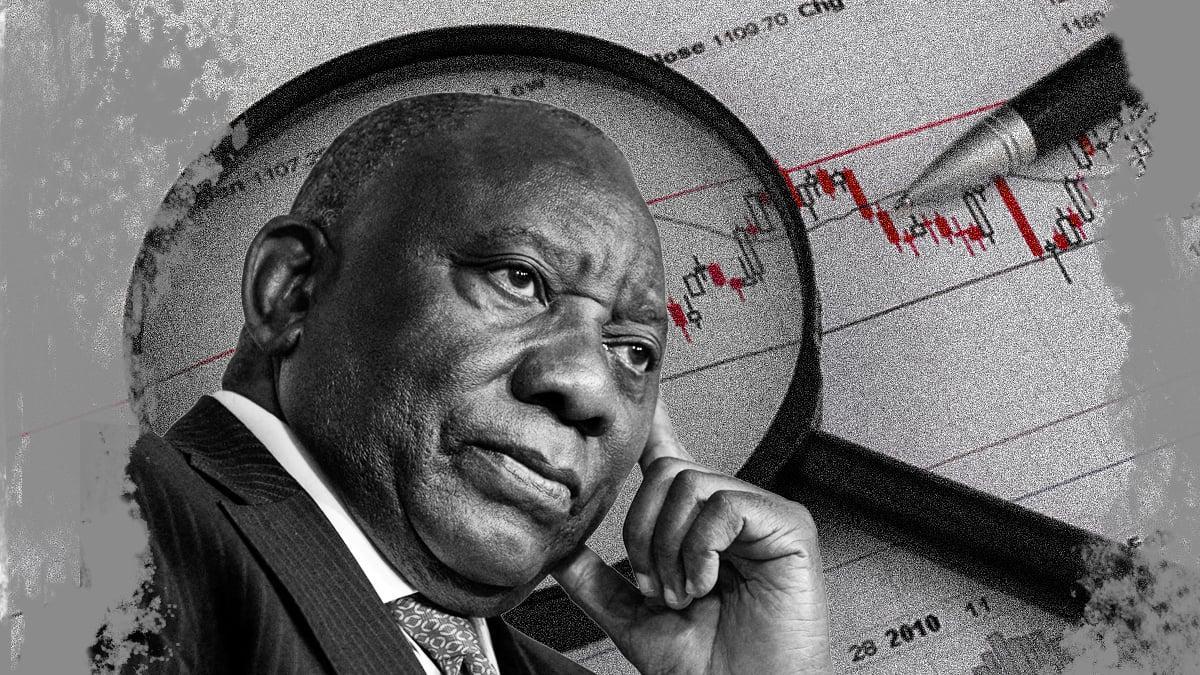Africa-Press – South-Africa. South Africa is the only country where real GDP per capita is expected to shrink in 2025 and 2026, according to the International Monetary Fund’s (IMF) October World Economic Outlook.
This means the country’s population is projected to become steadily poorer in the coming years, continuing a trend over the past decade.
Real GDP per capita is calculated by dividing a country’s economic output by its population and is often considered a proxy for a state’s standard of living.
South Africa’s population growth of between 1.4% and 1.6% per year over the past decade has outstripped its economic growth rate of 0.8% for the past ten years.
This effectively means, in real terms, the economic pie is being shared by an increasing number of people, while it is not growing at the same rate. Thus, individuals are left with a smaller piece of the pie.
The IMF’s October World Economic Outlook forecasts South Africa’s real GDP per capita to contract by 0.3% in 2025 and again by 0.3% in 2026.
This follows a 0.8% contraction in 2024 and a 0.5% decline in 2023 after a decade of economic and financial mismanagement.
The Centre for Risk Analysis (CRA) said this makes South Africa the only country of all those analysed by the IMF to see its real GDP per capita decline in 2025 and 2026.
This means the country is performing worse than its African peers, some of whom have a faster-growing population.
For example, Nigeria’s real GDP per capita is expected to rise by 1.8% in 2025 and 2.1% in 2026. India will see its ratio rise by a staggering 5.7% and 5.2%.
South Africa’s population is not growing at an excessively fast rate. Rather, its economic growth has stagnated in recent years.
The IMF expects this to improve slightly to 1.1% GDP growth in 2025 and 1.2% in 2026. These rates remain at or below the population growth rate.
This improvement is not enough to create an improving quality of life for South African citizens and is far from what is needed to tackle the country’s unemployment crisis.
South Africa has a strong jobs coefficient, meaning that economic growth typically translates into employment being created.
Historically, for every percent of GDP growth, the South African economy creates about 100,000 jobs. With around 600,000 people entering the workforce every year, significantly faster growth is needed to reduce unemployment.
South Africa has been left behind
South Africa is increasingly being left behind by its emerging market peers, whose economies are growing far faster and attracting significantly more investment.
This trend has been particularly noticeable in recent years, when emerging markets have grown their economies at an average rate of 4% per year. South Africa has averaged less than 1%.
While these differences may seem small, they become significant over decades. An economy growing at 4% a year doubles in size every 18 years, whereas an economy growing at 1% only doubles output every 72 years.
Earlier this year, Investec Wealth & Investment International calculated that if South Africa just matched its emerging market peers, its GDP would have been R12 trillion in 2024 rather than R7.5 trillion.
Thus, due to South Africa’s lost decade, its economy is 37% smaller than it could have been and the government would not be facing a financial crisis.
The era of slow growth was a result of a period of endemic government corruption, known as state capture, which has not appeared to slow in recent years.
This was coupled with load-shedding, crime, disintegrating infrastructure, and several foreign policy missteps, which slowed economic growth.
“The cumulative figure of revenue foregone is scary,” Investec Wealth & Investment International investment strategist Osagyefo Mazwai said.
“That is material, considering the fiscal constraints facing South Africa, which demonstrates the need to ensure economic growth to boost the fiscal war chest and further enable the capacity of the state to deliver services.”
If South Africa’s economy had matched its peers, the state would have collected around R800 billion more in tax receipts last year.
This would have effectively eliminated the state’s budget deficit and resulted in a far healthier financial situation, enabling it to invest heavily in infrastructure.
Instead, the state now has to turn to the private sector to leverage its balance sheet to maintain and upgrade infrastructure across South Africa.
South Africa is grappling with high gross national debt, with its debt-to-GDP ratio expected to peak at 77% this year.
With population growth at 1.3% outstripping real economic growth, people “are worse off than they were in 2010, suggesting that economic policy has been ineffectual in addressing poverty, unemployment and inequality”, Mazwai said.
The graph below shows South Africa’s economic growth over the past two years compared to its emerging market peers.
Source: dailyinvestor
For More News And Analysis About South-Africa Follow Africa-Press






